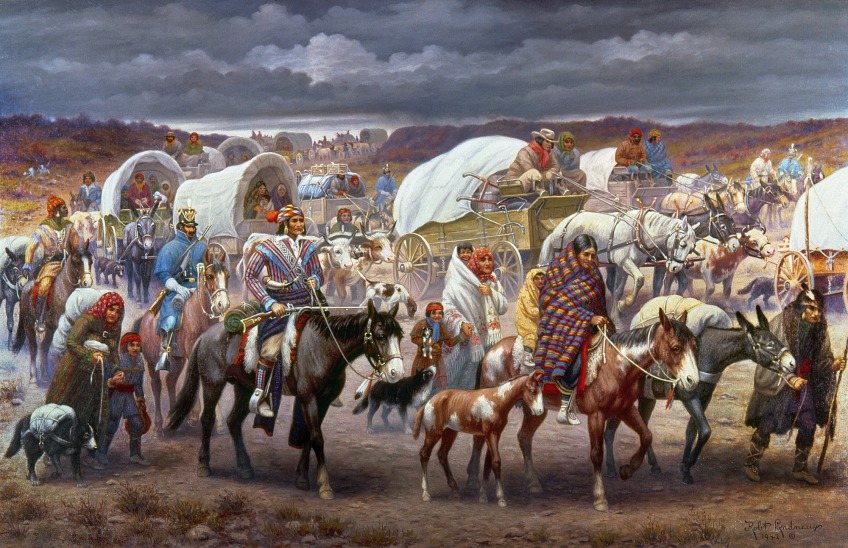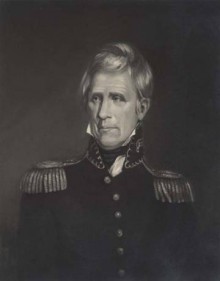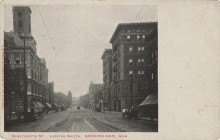(Excerpt from ALABAMA FOOTPRINTS Removal: Lost & Forgotten Stories (Volume 7)
Tensions between the Creek Indians and white settlers became so strained in May 1836 that a second Creek War broke out. Some refer to this war as more of an uprising than an actual war.
SUPPORT ALABAMA PIONEERS
BECOME AN ALABAMA PIONEERS PATRON
Tap to see how to Become a Patron!
“The privations, poverty, persecution of intruders and squatters had driven the Indians to despair. They were famished, miserable and so pillagers—guilty of petty theft. They burnt houses, stopped mails, they were disorderly, unruly and injurious. Simply, they were in the way. The speculators desired them to be removed to Arkansas, so that they might realize the fruits of the frauds. When the disorders had attracted sufficient importance, the State Governments of Georgia and Alabama intervened for the purpose of repression.”1
The first notice of hostilities with the Creeks began in the Spring of 1836 when Mr. Harper, a citizen of Harris County in the State of Georgia was killed. Harper had recently moved to Lafayette in the southwestern part of the county on the headwaters of the Sandy Creek, where there were then more Indians than white people. Immediately after his murder, news of other depredations committed by the Indians was reported in the counties of Russell, Barbour, and Macon where the Indians were numerous.2
Governor C. C. Clay of Alabama issued an order to raise the militia in several counties to defend against the Creeks. The town of Tuskegee was the place for organization. Governor Clay interviewed the Creek Indian Chief Opothleyahola who was in Montgomery at the time. Opothleyahola described the wrongs of his tribe and said they were in despair. The tribe was friendly and wanted no war and that he would join his men with cries to put down the war.3
During the morning of May 15th, 1836, around 300 Creek warriors, led by Jim Henry, crossed the Chattahoochee River from Alabama and attacked the town of Roanoke, Georgia. The Georgia militia was mustered, but there was a shortage of arms and they could not set up an adequate defense to save the town of Roanoke. The warriors burned plantations, carried off black slaves and destroyed crops and livestock. Fifteen residents were killed and over one hundred fled to the woods. The hotel was burned.4
The militia finally drove them away from Roanoke, but the Creeks continued their rampage. They attacked steamships on the Chattahoochee River and sank one. The crew and passengers on another were killed and wounded. Over 2,400 refugees fled to Columbus, Georgia.
The Governor requested help from the federal government, but federal troops were heavily involved in the Seminole War in Florida and could not leave.
On May 22, 1836, the Creeks attacked the town of Irwinton, Alabama (present day Eufaula, Barbour County, Alabama).
General Jessup led the Alabama militia from Tuskegee to Barbour and Russell counties where they were reinforced by 1,600 friendly Indians provided by Opothleyahola. Gen. Scott, the Commander of the Army was ordered Gen. Jessup to join him in Columbus.
The following excerpt is from a transcription of a letter by John A. Campbell who was in attendance of what took place next.
While Gen Jessup was gone, Opothleyahola with Captain Walker, an Indian Countryman named Barent Dubose, the son-in-law of Tustenugee Thlucco, (Big Warrior), with others and John A. Campbell, crossed the Cowikees and interviewed the tribes. The tribes were promised that if they would come quietly, they would have better guns to replace their old guns, as well as corn, corn-meal, bacon, and bread. Calico clothes would be furnished to the ladies of the hostile branch and they would fight any who would harm them.
Next day I was deputed to receive them. They were led by the Blind King riding on a pony. Shriveled and blind, I inquired of him his age. His answer was, four generations of persons, had been born and grown and passed away and he was here yet. The care of him was reverential and adoring. I concluded from his statement that his earliest days were in Georgia about the junction of Upton Creek. This, I suppose, would make him a neighbor of yours.
While additional skirmishes continued throughout May and June, General Scott declared the Creek War was over in Georgia and Alabama on July 1, 1836. He estimated that only 200 Creeks were still at large. His announcement was premature, however, since many warriors were hidden in the swamps throughout the two states. Additional skirmishes broke out during the months of July through September from the Creeks remaining in the swamps. The militia from Georgia and Alabama continued to search remote areas.
Meanwhile, the fight against the Seminoles raged on in Florida. In September 1836, the United States Army recruited 759 Creek warriors to become scouts and mediators against the Seminole on the condition that their families would be allowed to remain in Alabama. But when the warriors returned home the next year, they discovered that their families were shipped out west to the Indian Territory.
In February and March of 1837, fighting broke out again in Alabama at Cowikee Creek, and along the Pea River at Hobdy Bridge. The last battle in Alabama took place on March 25, 1837, along the Pea River near Hobdy Bridge when the Alabama Militia found and overran a large Indian camp in the swamp. The battle lasted almost four hours with heavy losses on both sides. After this battle, the second Creek War moved into Florida.5
1Letter from John A. Campbell, Transactions of the Alabama Historical Society, Volume 3, Alabama Historical Society, 1899
2On the Hills of Home by John Calvin Sharpe, Hank Rogers, 1972.
3Letter from John A. Campbell, Transactions of the Alabama Historical Society, Volume 3, Alabama Historical Society, 1899
4The Creek War of 1836 on the Chattahoochee River (part I of II, of the 2nd Creek War) by Christopher Kimball
5The Creek War of 1836 on the Chattahoochee River (part I of II, of the 2nd Creek War) by Christopher Kimball
ALABAMA FOOTPRINTS Removal– some additional stories
- Plan for Indian Removal Started With President Thomas Jefferson
- Intrigue and Murder After Treaty At Indian Springs
- President Adams And Governor In A Stand-off
- Gold Causes Expulsion Of The Cherokees
- Cherokee Chief Ross Became Homeless
SEE ALL BOOKS BY DONNA R CAUSEY AT https://www.amazon.com/author/donnarcausey





